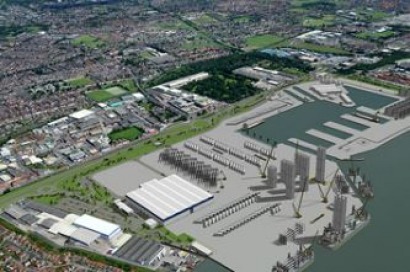
“Our decision to construct a production facility for offshore wind turbines in England is part of our global strategy: we invest in markets with reliable conditions that can ensure that factories can work to capacity," said Michael Suess, member of the managing board of Siemens AG and CEO of the Energy Sector.
"The British energy policy creates a favourable framework for the expansion of offshore wind energy. In particular, it recognizes the potential of offshore wind energy within the overall portfolio of energy production,” Suess added.
The offshore wind market in Great Britain has high growth rates, with an even greater potential for the future. Wind power capacity has doubled here within two years, to roughly 10 gigawatts. By 2020, a capacity of 14 gigawatts is to be installed at sea alone to combine the country’s environmental objectives with secure power supply. Projects for just over 40 gigawatts are currently in the long-term planning.
At a ceremony announcing Siemens' intentions, British Prime Minister David Cameron declared: “Our constructive political environment enables us to provide new jobs for the wind power industry, together with a reliable and more sustainable energy mix.”
Siemens and its British partner Associated British Ports (ABP) will be investing a total of €371 million at the project sites.
To date, Siemens has installed more than 2,200 turbines onshore and offshore in Great Britain.
Green Port Hull is scheduled to take up operations at the beginning of 2016, with commencement of rotor production scheduled for the summer of 2016. Full capacity of the factory is to be reached starting at mid-2017.
For additional information:

